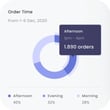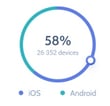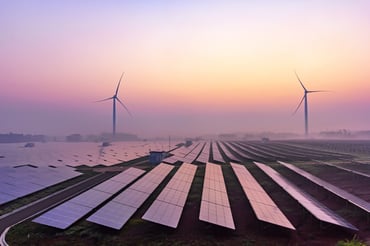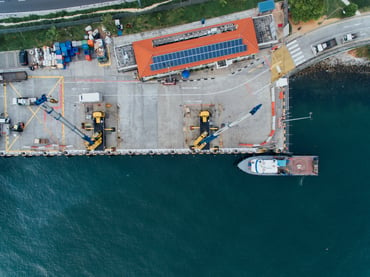It was easy to adapt the solutions to the needs of our organisation
Together with our customers, ENTRNCE is developing new market models. Working within the current regulatory framework, we’ve solved the issue of bridging the traditional energy market to a sustainable & decentralised future.
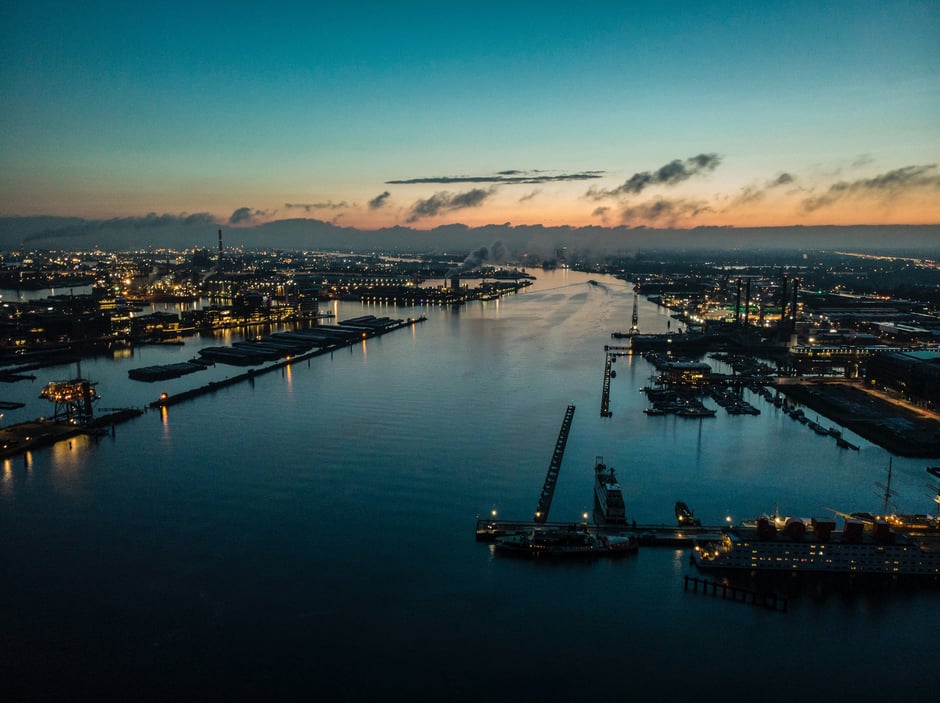
Customer Stories: the Port of Amsterdam - ‘Sharing energy to keep the lights on'
The climate targets are clear: coal and gas need to make way for energy from renewable sources, such as solar and wind power. However, growing demand and supply of renewable electricity is putting the infrastructure under pressure. Strengthening the grid is a costly and time-consuming process and therefore undesirable or many parties. One customer success story is the Port of Amsterdam. The Port is examining how it could make better use of the existing infrastructure by allowing companies to share energy.
(Source: Duurzaambedrijfsleven)
DuurzaamBedrijfsleven was invited to Prodock: the Port of Amsterdam’s innovation hub, to see this customer story at work. Here ambitious entrepreneurs can develop and roll out their products, processes and propositions. Prodock combines an industrial workshop with office space, and is home to around 25 promising companies that are promoting innovation in the Amsterdam port area. One of these is Shared Energy Platform, or SEP.
The lights could go out
For Robin Schipper, founder of SEP, it’s clear that the Port of Amsterdam is grappling with the challenges presented by the energy transition. “You can see that the port is being modernised all the time. As a port authority you naturally want to encourage that. However, as a result of electrification and digitisation, we will soon reach the limits of what the substations can handle.” Schipper therefore decided to sound the alarm. “If we do nothing, it won’t be long before we are at maximum capacity. This will have an adverse impact on existing and future businesses across the whole of the port area. People need to be aware that if we carry on as we are, at some point the lights could go out.”
Sun, wind and biomass - a customer story of renewable energy exchange
Rather than waiting for investments in the grid, Schipper took action himself. In the Amsterdam port area, energy is consumed locally in large volumes. However, the relationship between supply and demand is not clear and it’s not known when the peak usage periods are. “With SEP we want to change this. We are an open-source platform that matches energy supply and demand”, Schipper explains.
“In this way we balance the grid for each substation to prevent congestion.” SEP is also aiming to achieve real-time matching of the supply of and demand for renewable energy. “This means that if the sun is shining you get solar energy from the roofs of the buildings at the port, and if the wind is blowing you’re supplied with wind energy from Ruigoord wind farm. In the absence of both sun and wind, renewable energy is provided by waste management company AEB.”
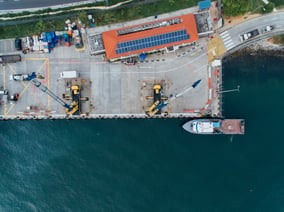
Matching supply and demand
For the primary process (supplying electricity) SEP already has market access via ENTRNCE, a subsidiary of grid operator Alliander. However, the success of the model mainly lies in enabling companies to share electricity with each other. Schipper: “We are therefore actually focusing on optimising the supply of energy in the port area. By making consumption transparent, we are able to match energy production to this.” Put simply, companies can switch on their machines when the energy price is low and, even more importantly, switch them off when the price is high. For green electricity producers the exact opposite applies, of course. “And bypassing brokering on the energy market enables us to save costs. That means we can supply green electricity for the price of non-renewable energy.”
With local energy exchange, everyone's an energy supplier
Peter Molengraaf, a former director of Alliander who is now at the helm of SEP at the Port of Amsterdam, is also closely involved in the project. He knows better than anyone what the limits of the electricity grid are. “Sharing electricity makes it possible to optimise the grid locally. The wholesale market does not do this. In theory, our customers are the energy supplier; in practice, and from a legal perspective, SEP fulfils this role”, Molengraaf explains.
This model has a number of benefits. The producer receives a higher price for its renewable electricity. The consumer pays a lower price than would be paid to conventional energy companies. And the grid operator sees a reduction in the load on the grid, as companies are balancing energy between each other. “If the community of connected companies grows, we will be able to use energy more efficiently. That means more electricity will be able to pass along the same cable and the Amsterdam port community will be able to modernise and continue to grow.”
“Sharing electricity makes it possible to optimise the grid locally.”
Contract with your neighbours
Both men believe that the Amsterdam port area lends itself perfectly to energy sharing. Molengraaf: “All the companies here are independent, of course, but there are also a lot of connections between them. Storage and production companies, suppliers and manufacturers – you find all kinds of economic relationships in a port community like this. Doing things together is therefore not unusual at all.” Schipper: “And the Port of Amsterdam can play a very useful neutral role by bringing these parties together.”
Schipper noticed that many companies at the port of Amsterdam are working on the same things. “Everyone is working on sustainability, circularity and the energy transition. But getting started on your own is not easy. We make this possible in an accessible way, simply by means of an energy contract that you share with your neighbours. This could mark the start of a whole lot more collaboration, which is crucial when it comes to the energy transition.”
Are you also looking for ways to make your renewable energy transactions more transparent and conceivable?
Reach out to our specialistsA customer story about making the market transparent
SEP launched the Port of Amsterdam initiative on 1 August. Three customers are currently connected to the platform:
- Passenger Terminal Amsterdam,
- Walstroom (shore power for river cruise ships), and
- AEB (mentioned above).
Energy is now being bought and sold for these parties on an hourly basis - a customer success story. “The system works”, says Molengraaf. “The challenge now is to convince other companies and inspire them with our proposition.”
In the future Schipper hopes to be able to provide an ever greater insight into use of the infrastructure at the port. “At the moment the energy world is rather opaque. You enter into a contract for a fixed amount, but often you don’t know exactly where the energy is coming from or when your consumption is highest. We want to make everything much more transparent.”
Molengraaf agrees. “The dynamics of supply and demand, and how a company’s own processes vary in terms of consumption are often managed by the procurement department or externally. Our aim is to be much more at the forefront of the management’s mind. Together with their neighbours, companies can then balance their consumption so the infrastructure is used more efficiently.”
Call to action for developers
Schipper and Molengraaf are also explicitly appealing to other parties to help them develop the open-source platform. “We are always on the lookout for partners who can control the consumption and production of renewable electricity”, says Schipper.“Here we are talking about:
- cold stores,
- pumps in thermal storage systems,
- and batteries, for example.
Powerful solutions for energy suppliers
No ‘one size fits all’ when engaging energy consumers. This is why ENTRNCE is dedicated to creating solutions that assist energy suppliers to facilitate customer demand in decentralised energy markets. Our products give you the flexibility to develop new B2C and B2B propositions with creative and revolutionary ways of engagement.
Energy for the future.
Consumption, generation and storage of renewable energy supply is the future. Discover how we’ve helped energy retailers overcome their greatest energy market challenges by adding transparency to energy flows and sustainable energy transactions.

We can tackle your challenge together.
Decentralised energy production, storage and consumption will continue to grow rapidly. The use of transparent energy solutions highlights opportunities of creating new client propositions. Speak to our experts and ensure your energy supply system is ready for the future.
We’ll reply within 1 day.
Your independent platform for handling any conceivable power transaction.
Get in contact